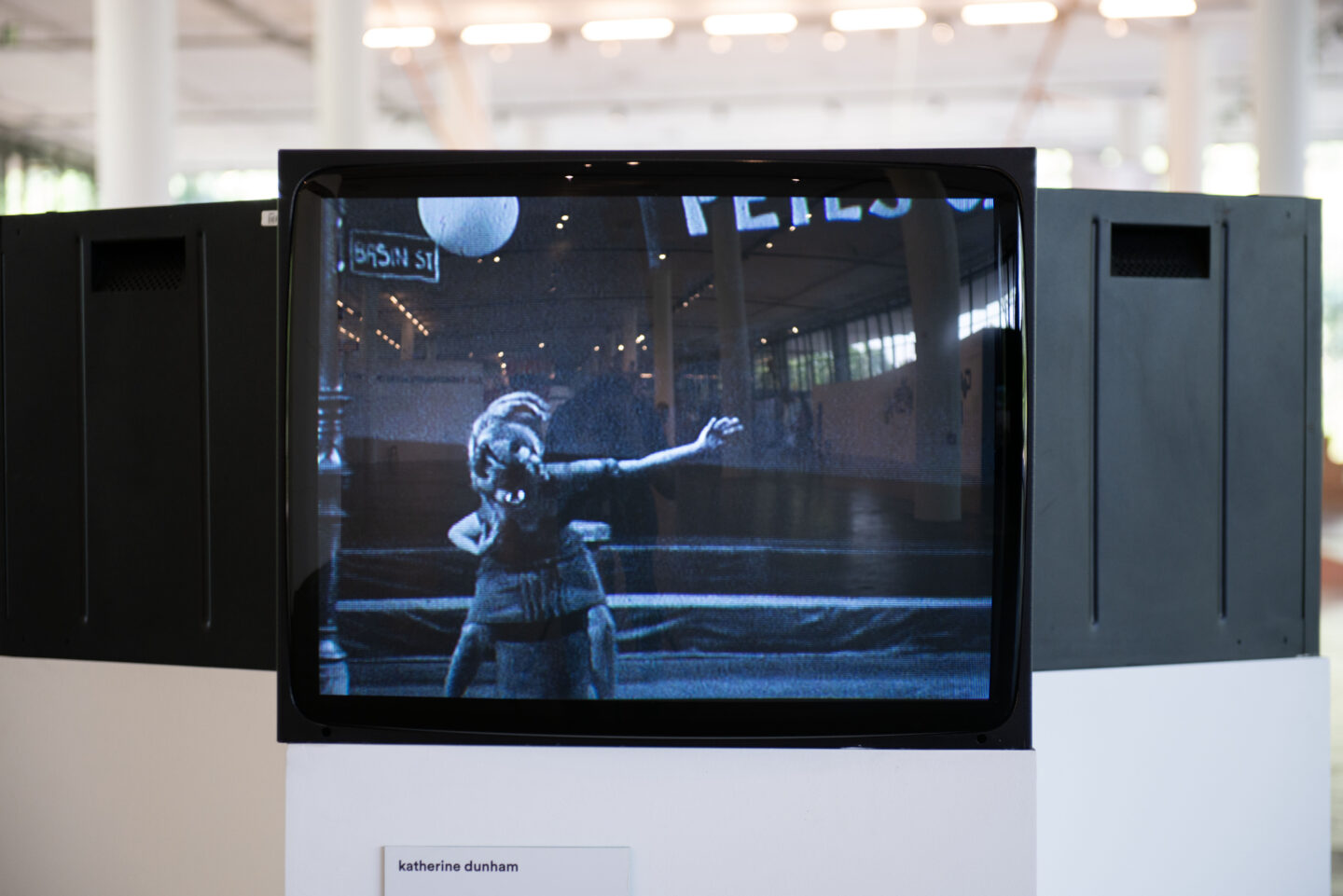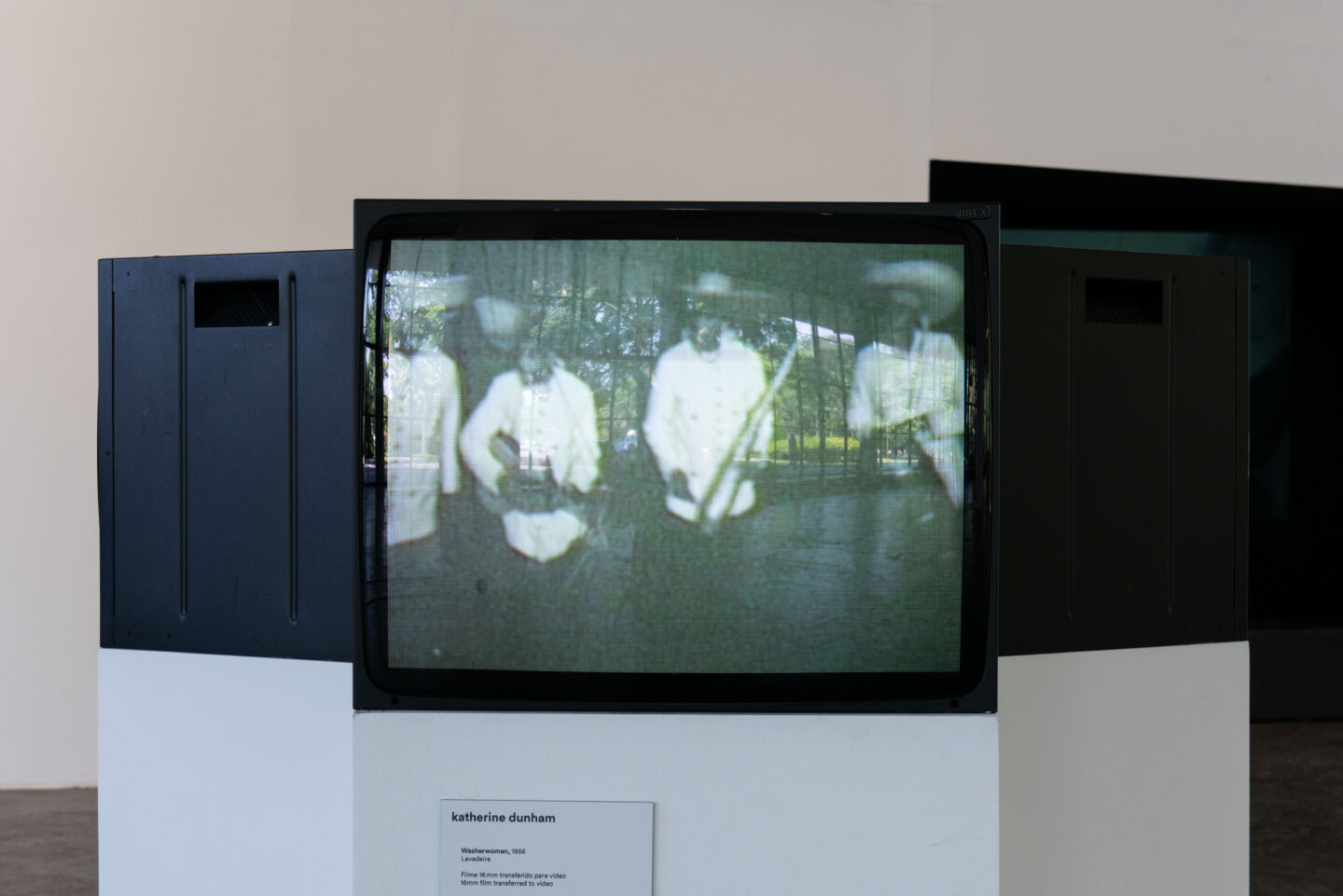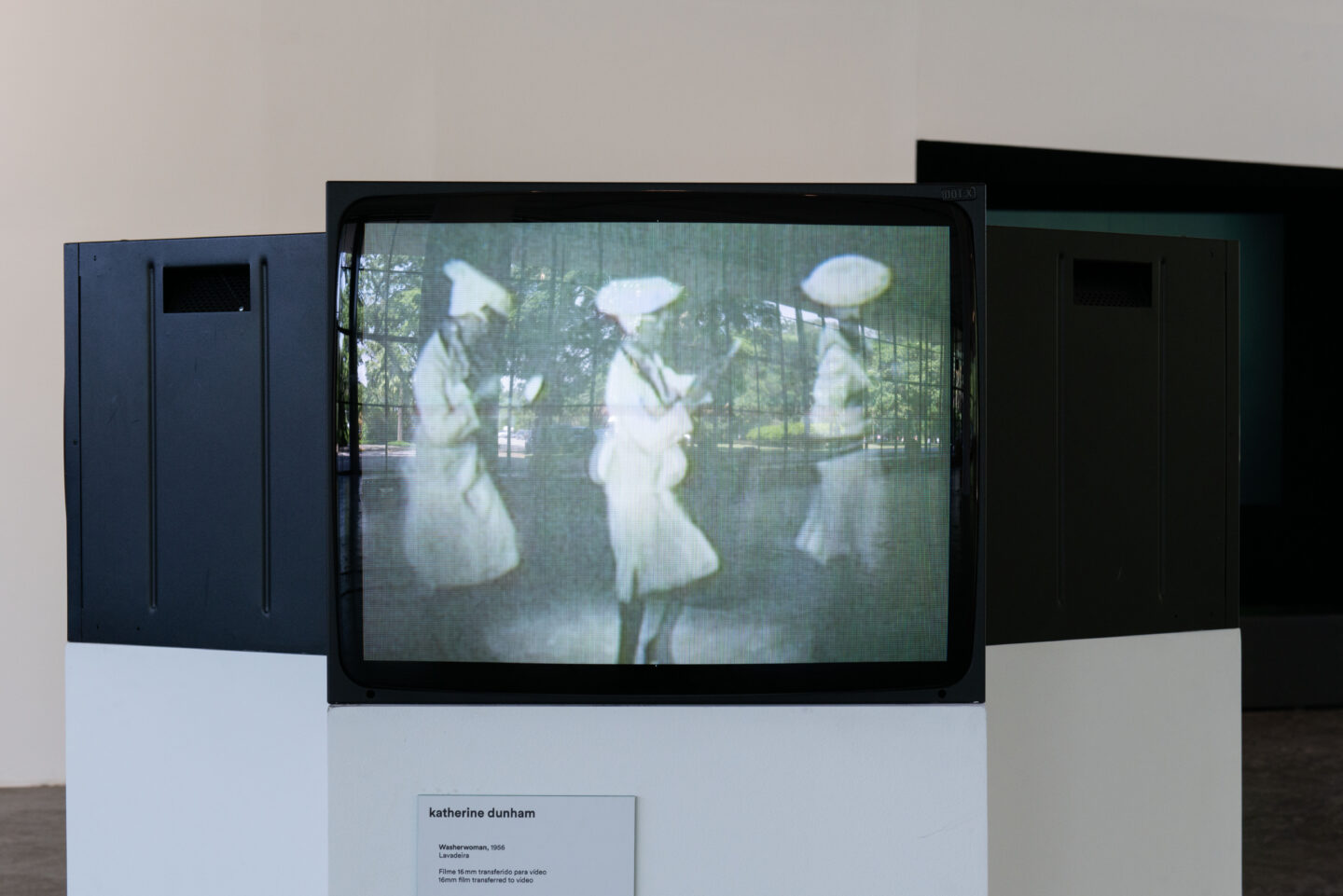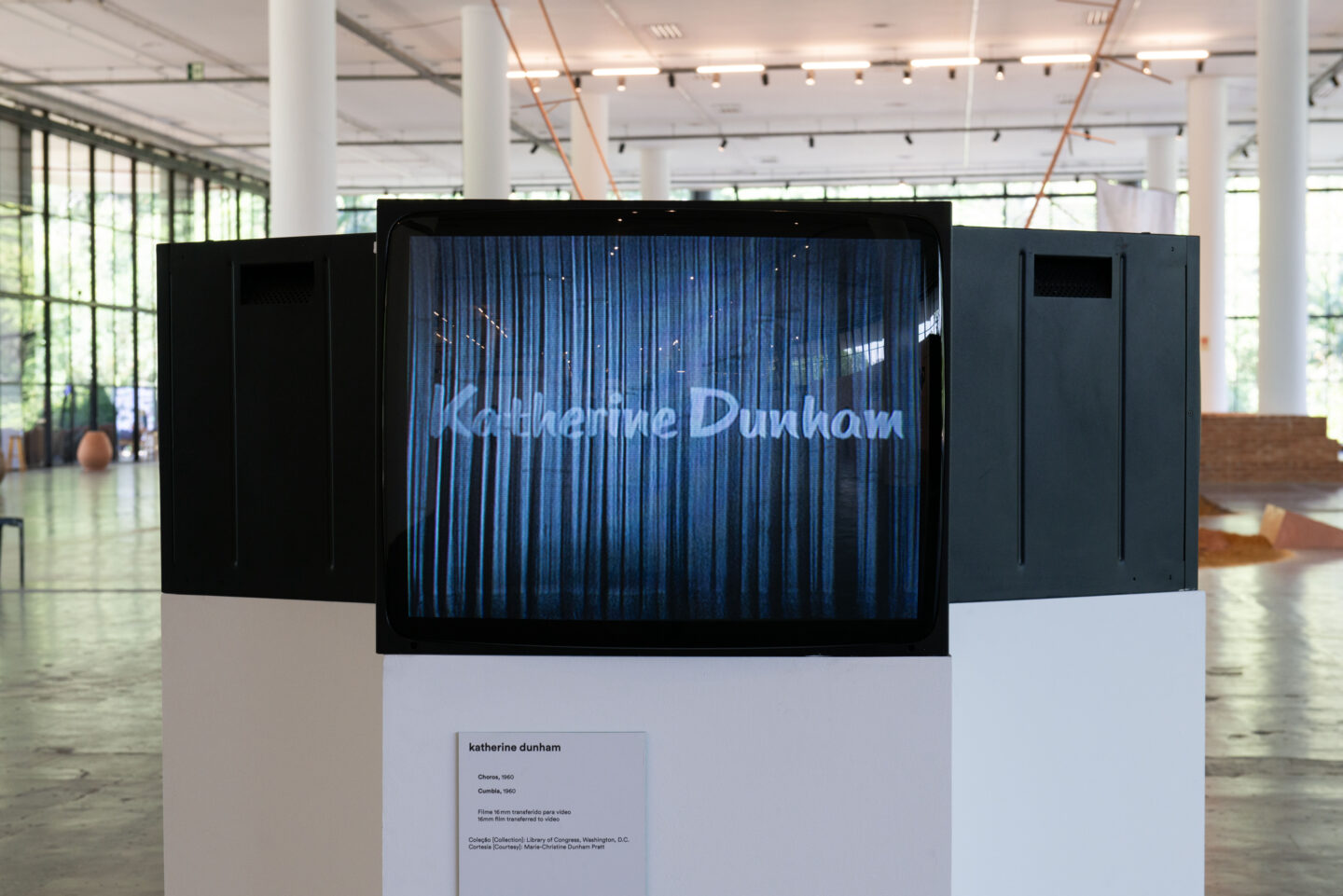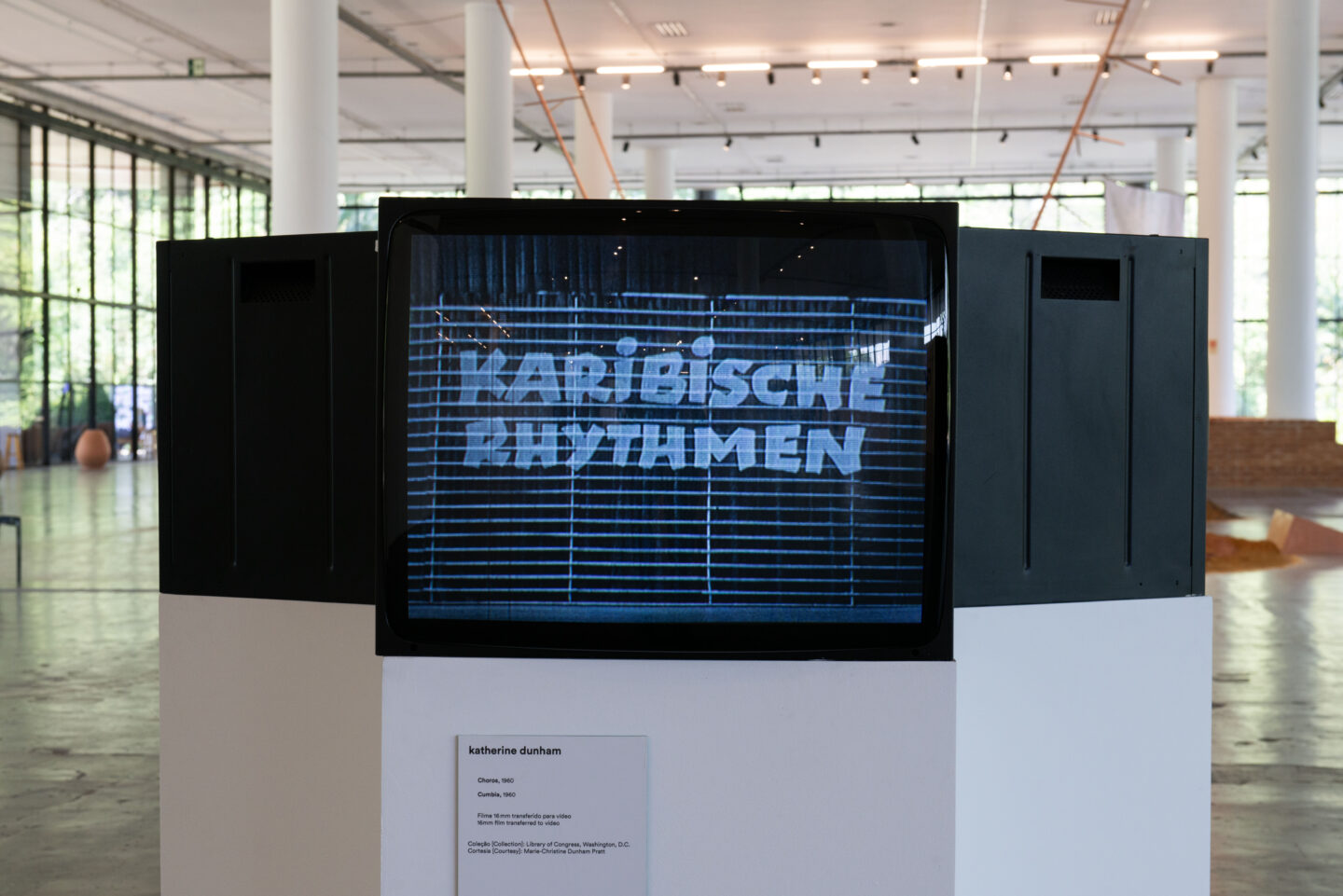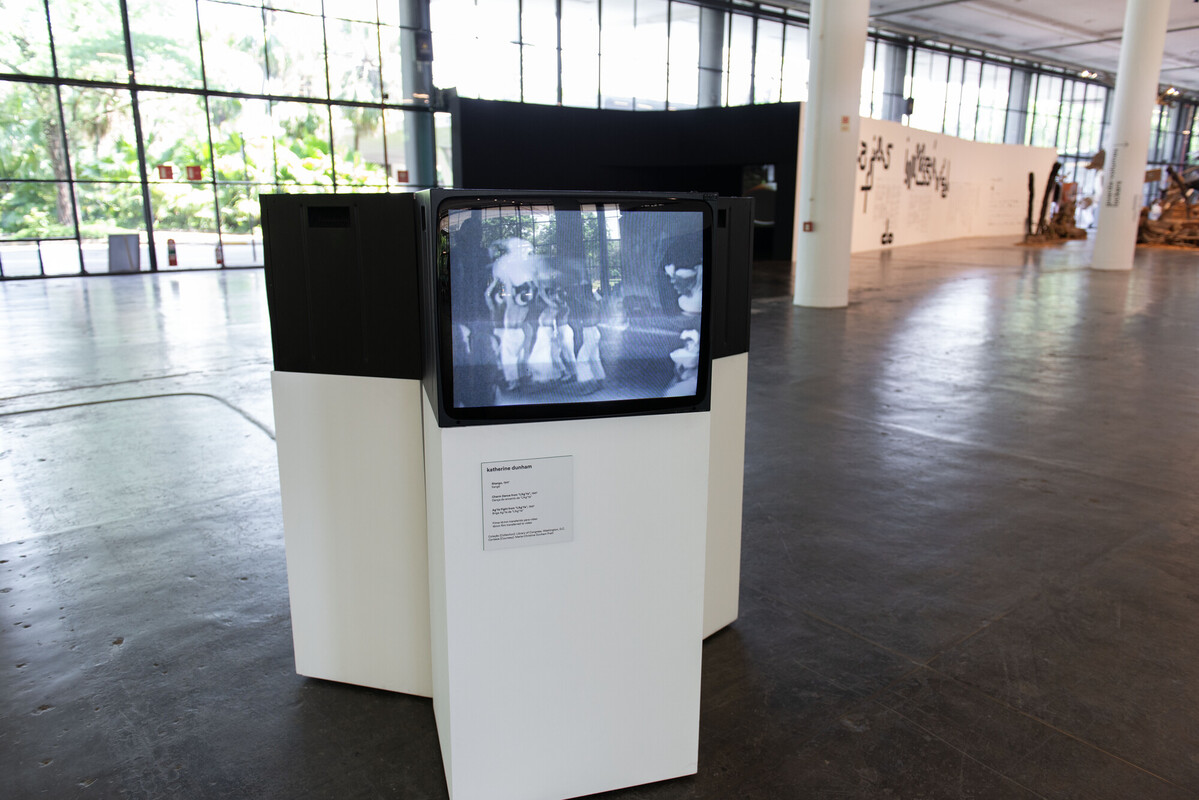
Katherine Dunham
Katherine Dunham’s (1909–2006) unique career as an anthropologist and dancer made it possible to imbue the black body with other meanings, to fissure colonial clichés and imaginaries about dances, bodies, and contexts of African origin, and to respond to the contingencies of her broader historical moment.
By furthering the conversation between anthropology and dance in both unsuspected and groundbreaking ways, ethnographizing dances from the Caribbean and South America with vigorous and pioneering body play, she brought about the emergence of dance anthropology as a discipline, and subsequently built a dance technique and training school that are now key legacies.
Rigorous in her creations and ideas, she linked elements of European classical ballet and Caribbean ritual dances, building a technique with lines, isolations, and undulations, as well as varieties of tempos and rhythms that were broader than the concert dance forms of the first half of the 20th century. By pointing to similarities, she also allowed differences to emerge, without fearing the inevitable contradictions of this movement, causing surprise to Eurocentric eyes, all too convinced of the limitation of the body of Others.
Her performances sparked diasporic narratives illustrating rituals, dramatizations, spiritualities, and modes of daily life that were catalysts of community experience. Her foray into Caribbean realities became a way of establishing links with African memory and ancestry and of retrieving archives to recreate them in the light of a perception that questioned colonial ways of seeing the Black world.
Her articulation of the Black diaspora in practical and conceptual terms was of such relevance that it may have anticipated the very idea of the Black Atlantic. Dunham envisioned the notion of the African diaspora in its intercultural and geographical dimension, further showing how Black dance modernism contributed to the expanded field of dance.
The choreographer’s work showed how dance could relate to issues that permeated social life. In 1950, during a tour of Brazil, she suffered a racial slur at the Alvorada Hotel in São Paulo, which triggered heated discussions in the field of race relations, culminating in the enactment of the Afonso Arinos Law (Law n. 1.390/1951), which considered racist practices to be a criminal offense. It is worth mentioning that at this same time the choreographer established contact with the Brazilian dancer Mercedes Baptista, who would later join her company in New York.
Dunham, through her choreographies and movements around the world, has imagined and circulated representations of what the Afrodiasporic body can be, and thereby disseminated knowledge of her own and of an entire community. Her humanistic vision and activism have contributed in a multidimensional way to the fields of arts, education, and the anti-racist struggle, intertwining artistic and academic spheres in a pertinent and necessary way.
luciane ramos silva
translated from Portuguese by philip somervell
- Vista das obras Shango [Xangô], Charm Dance from “L’Ag’Ya” [Dança do encanto de “L’Ag’Ya”] e Ag’Ya Fight from “L’Ag’Ya” [Briga Ag’Ya de “L’Ag’Ya”], de Katherine Dunham durante a 35ª Bienal de São Paulo – coreografias do impossível © Levi Fanan / Fundação Bienal de São Paulo
- Vista da obra Washerwoman [Lavadeira], de Katherine Dunham durante a 35ª Bienal de São Paulo – coreografias do impossível © Levi Fanan / Fundação Bienal de São Paulo
- Vista da obra Washerwoman [Lavadeira], de Katherine Dunham durante a 35ª Bienal de São Paulo – coreografias do impossível © Levi Fanan / Fundação Bienal de São Paulo
- Vista das obras Choros e Cumbia, de Katherine Dunham durante a 35ª Bienal de São Paulo – coreografias do impossível © Levi Fanan / Fundação Bienal de São Paulo
- Vista das obras Choros e Cumbia, de Katherine Dunham durante a 35ª Bienal de São Paulo – coreografias do impossível © Levi Fanan / Fundação Bienal de São Paulo
Katherine Dunham (Glen Ellyn, IL, USA, 1909 – New York, USA, 2006) was a dancer, choreographer, educator, anthropologist, and Afro-American social activist. Her innovative choreography and the development of the Dunham Technique, a fusion of African, Caribbean, and modern dance styles, showcased the richness and diversity of Black dance traditions.

 Português
Português